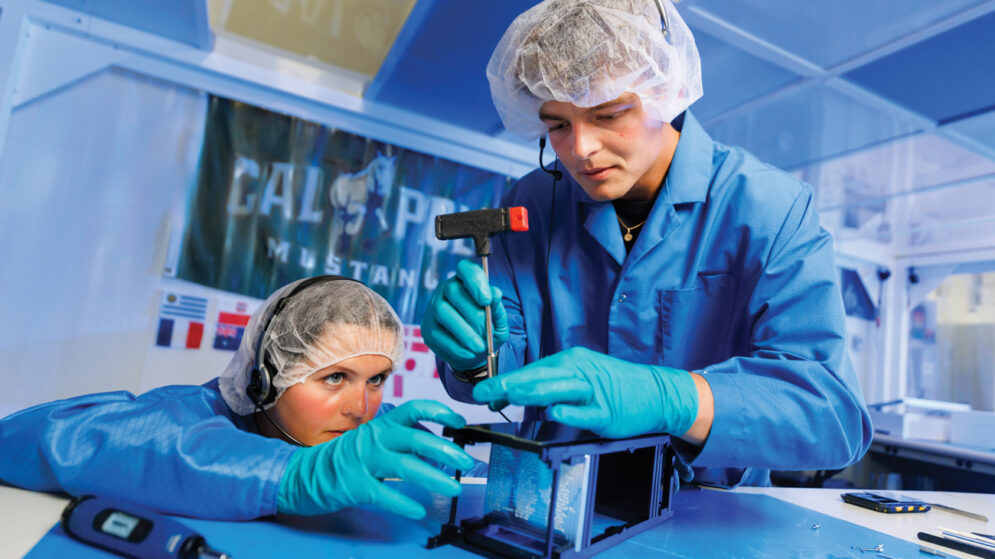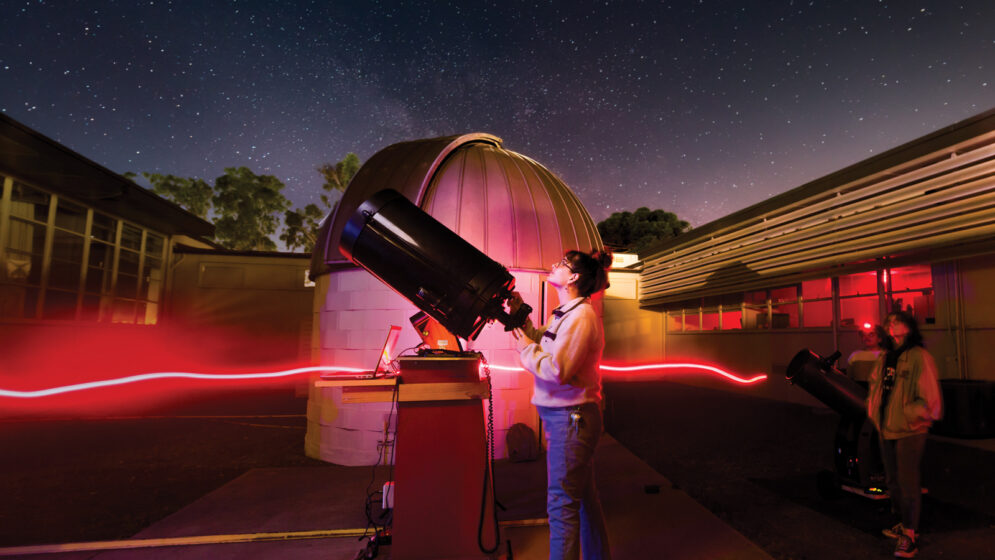A Legacy in Space
It All Adds Up
A mathematics degree opened the door for Leslie Livesay to work on JPL’s most groundbreaking missions and become the lab’s first female deputy director.
By Robyn Kontra Tanner
Photos courtesy of NASA / Jet Propulsion Laboratory
Share this article:
 Though Leslie Livesay (Mathematics ’85) has never left Earth, her work certainly has. In four decades with NASA’s Jet Propulsion Laboratory, she has been a leader on missions that have touched the surface of Mars and analyzed other planets in far corners of our galaxy. Now the deputy director of JPL, Livesay is guiding the organization through a critical period in space exploration.
Though Leslie Livesay (Mathematics ’85) has never left Earth, her work certainly has. In four decades with NASA’s Jet Propulsion Laboratory, she has been a leader on missions that have touched the surface of Mars and analyzed other planets in far corners of our galaxy. Now the deputy director of JPL, Livesay is guiding the organization through a critical period in space exploration.
As other industry players focus on crewed missions beyond low Earth orbit, JPL remains dedicated to the robotics that gather critical information to propel space exploration forward. In the last year, the lab’s teams have developed an orbiter bound for Jupiter’s moon Europa, launched Earth-mapping radar satellites in partnership with the Indian Space Research Organisation, and bolstered communications networks that support long-range missions, including NASA’s Artemis program.
“Having humans go to the moon and then on to Mars is going to take a lot of investment in engineering. It will be a joint venture with robots and humans to make that endeavor a real success,” she says. “I feel like the fi eld is going to be more exciting than it has been. I wish I could stay another 40 years.”
Livesay’s path to JPL began as a high school sophomore, when her father’s Air Force career took the family to what was then known as Vandenberg Air Force Base. She took note of Cal Poly’s nearby campus and followed her genuine passion for numbers to its mathematics major.
“I loved the connection between math and physics and how that allowed you to solve real problems,” Livesay says. She recalls teaming up for math competitions that fueled her collaborative skills and intense courses — like advanced differential equations — that helped her realize how she could leverage math in her career.
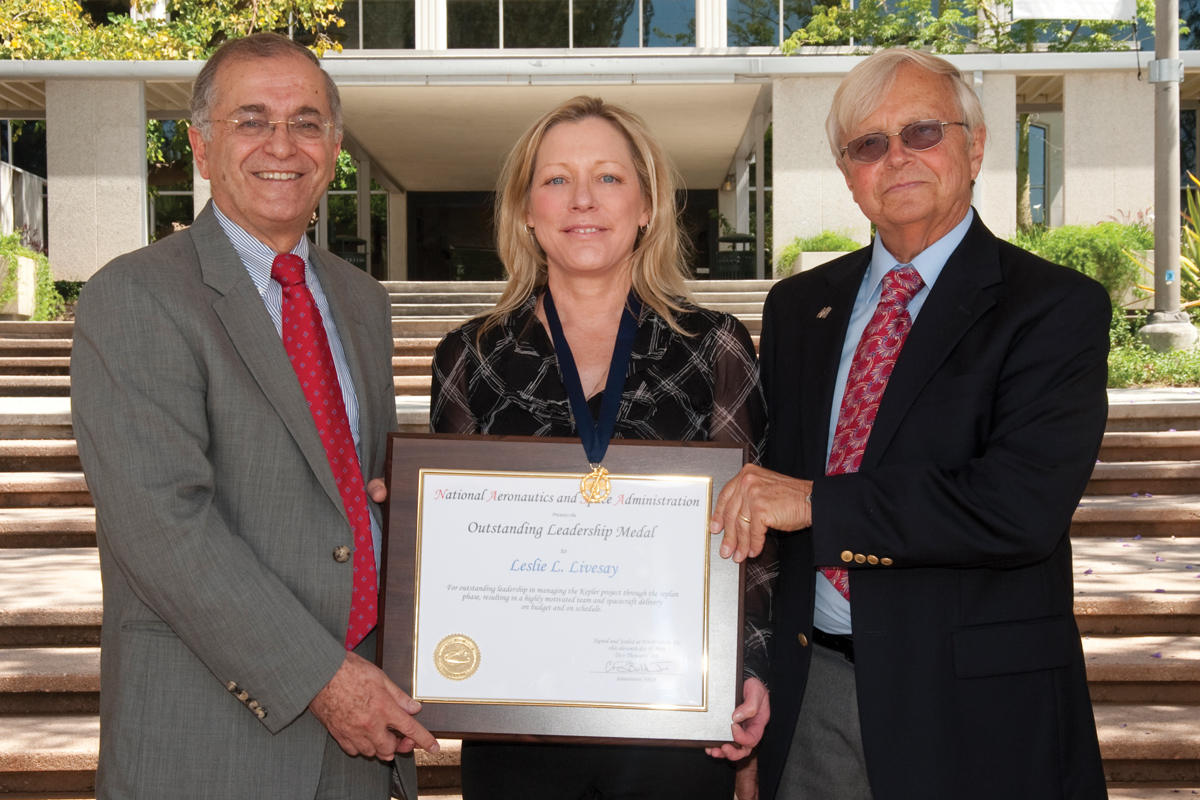
Livesay, center, accepts NASA’s Outstanding Leadership Medal in 2010.
After Livesay met JPL leaders at a Cal Poly career fair, she secured a role on one of its deep space telecommunications projects and pursued a master’s degree in electrical engineering from USC. Her understanding of mathematics and hands-on experiences at Cal Poly helped her thrive.
“I think Cal Poly paved the way for universities in this Learn by Doing mode, and I believe when you get that experience when you’re still in school, it helps you accelerate during the early parts of your career,” says Livesay. “Rapid prototyping kind of goes hand in hand with Learn by Doing. I think it’s one of the essential parts of doing these types of missions because there are a lot of unknowns.”
When Livesay joined the Mars Pathfinder project as telecommunications lead, she and her colleagues had no way of knowing it would revolutionize how we see the red planet. The mission centered on testing entry, descent and landing technology on Mars, but it also included a small technology demonstration: the planet’s very first rover capable of exploring terrain beyond the landing site.
“It was really one of those underdog projects where you’re on a small team. A lot of people didn’t think we could make it happen — and we did,” Livesay says of the mission’s success. “I don’t think we had any idea what kind of impact it would have until much later. It completely changed the next 30 years of Mars exploration.”
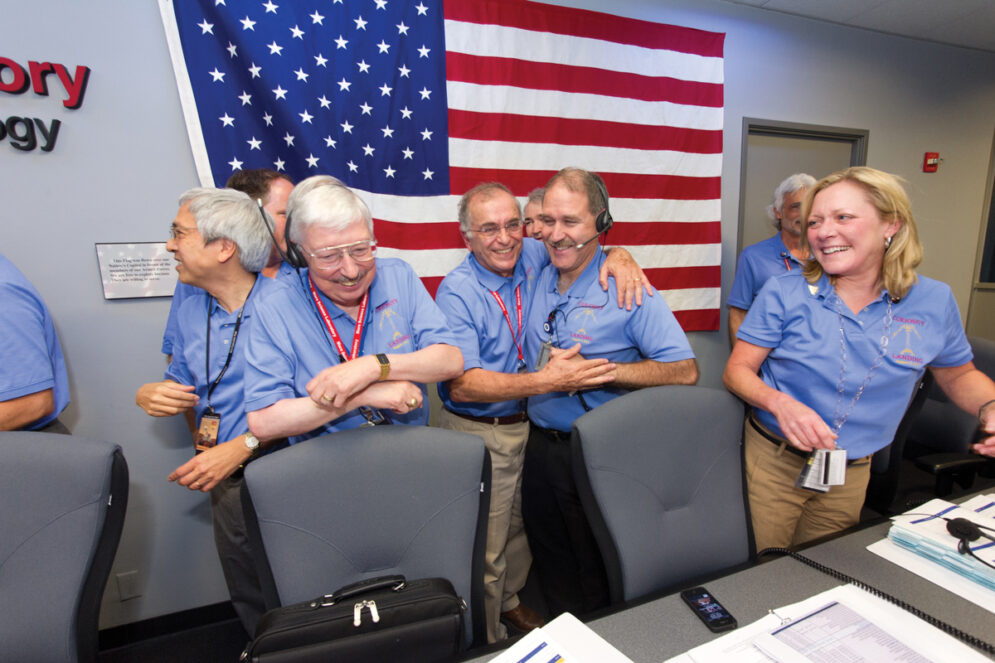
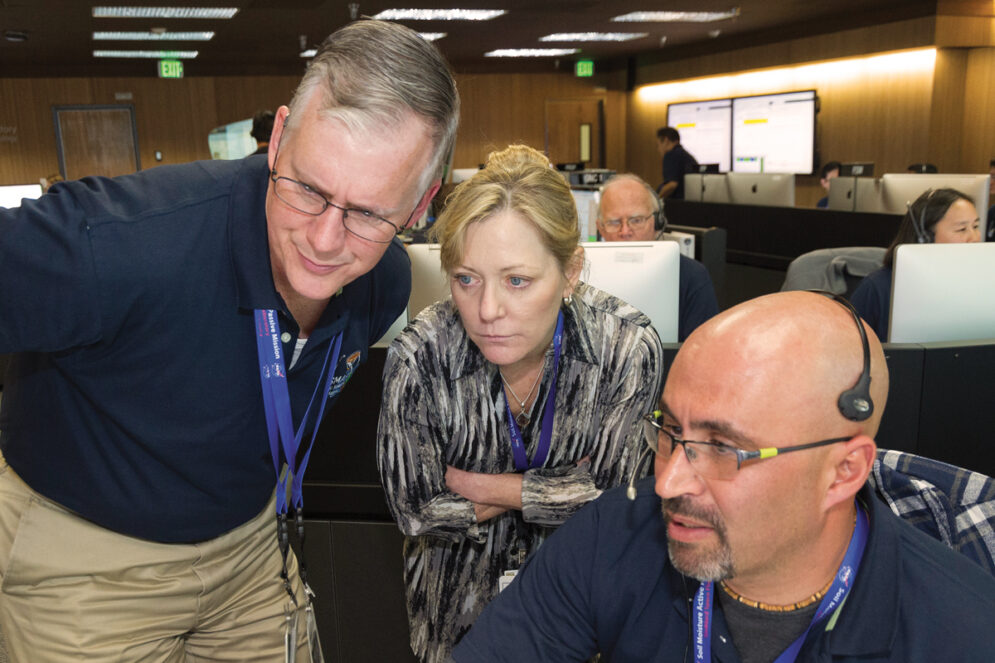
First photo: Livesay, right, celebrates with her team as the Curiosity rover lands on Mars on in 2012. Second photo: Livesay, center, monitors the launch of the Soil Moisture Active Passive satellite in 2015.
Years later, Livesay became the manager of the Kepler Exoplanet Mission in its early stages. Its groundbreaking technology detected Earth-sized terrestrial planets outside our solar system as they orbited their own stars. Before the mission, only about 300 exoplanets had been identified; but Kepler helped scientists understand that they are most likely abundant in our galaxy and beyond.
“It resulted in a very significant understanding change in how we view exoplanets and where our place is in the universe” she says.
Over the years, Livesay’s leadership grew in scope from projects to entire programs at JPL. She oversaw the lab’s engineering and science directorate, served as director for astronomy and physics and became the associate director for flight projects and mission success, which included operations of all JPL flight missions.
“It is amazing to watch what comes out of that really tight collaboration between engineering, science and technology.”
Leslie Livesay, deputy director of JPL
This moment at JPL might be exciting, but Livesay recognizes that it’s also precarious. Federal funding cuts to NASA and JPL are throwing the future of certain programs and research into uncertainty.
“Our role right now — number one — is to make sure that we are delivering on what we have on our plate, making sure that we do that right and that we keep our teams focused on the missions that are coming,” Livesay says. “This is not the first time in my career that we have faced some uncertainty, and I don’t think it’ll be the last. Our focus needs to be on the work that we’ve committed to do for NASA and the nation.”
When Livesay looks back on her years at JPL, it’s not an individual project or accomplishment that comes to mind. She thinks of the people who have made incredible discoveries through their ingenuity and teamwork. Her career is proof that individual parts don’t just add up — they multiply into something greater, whether that’s people on a team or scientific discoveries that bridge humanity toward the next milestone in space exploration.
“Iʼm proud of everything that the laboratory does, and it is all because of the people that are here,” says Livesay. “It is amazing to watch what comes out of that really tight collaboration between engineering, science and technology.”
Your Next Read
Cal Poly’s CubeSat Lab broke barriers. Two decades later, students are still rewriting the story.
Nestled in between the arms of Building 52, the Cal Poly Observatory is both a portal to the stars and a tool for meaningful research.


